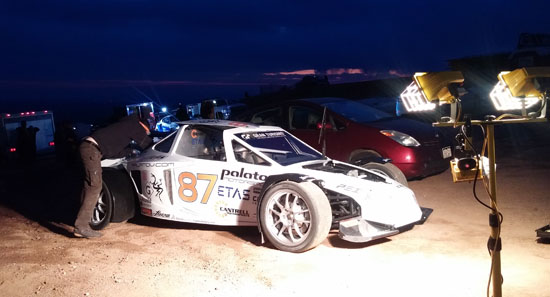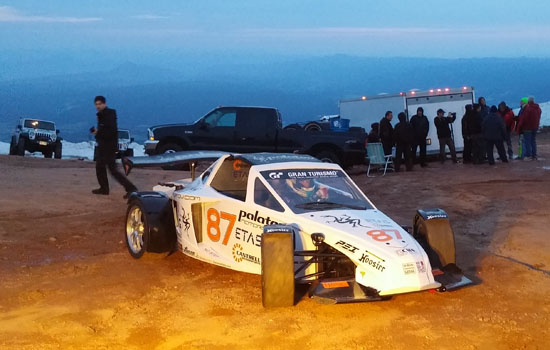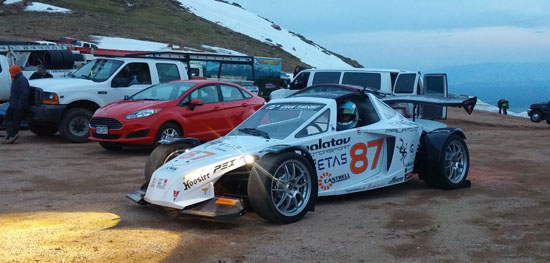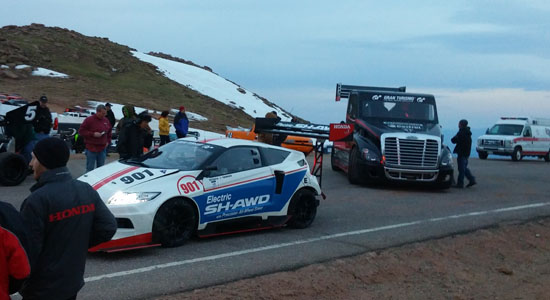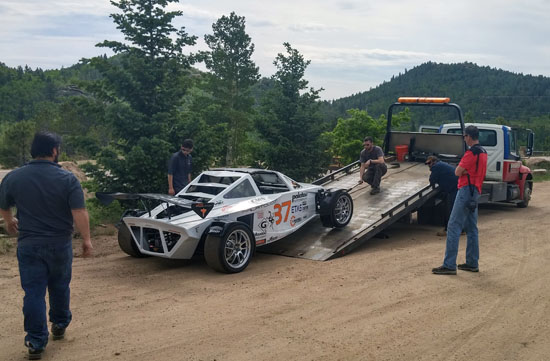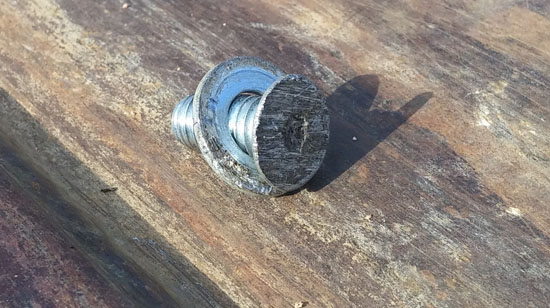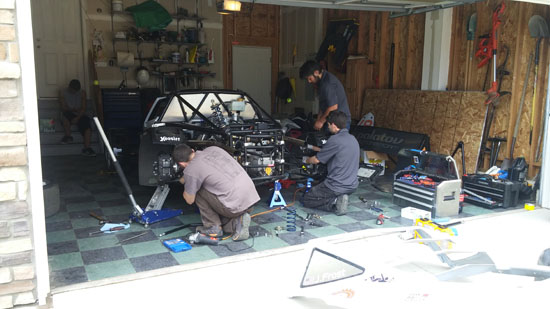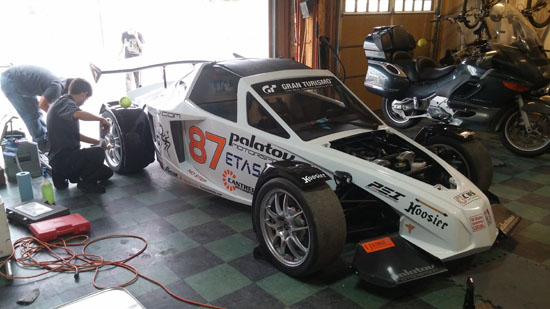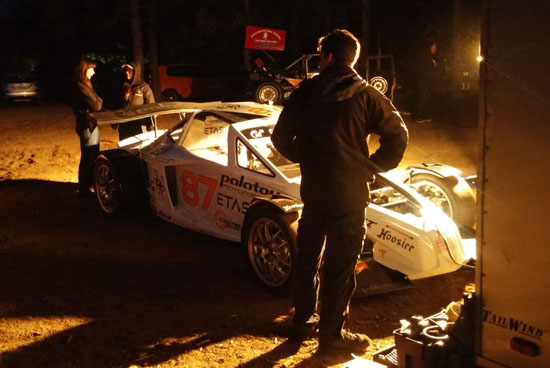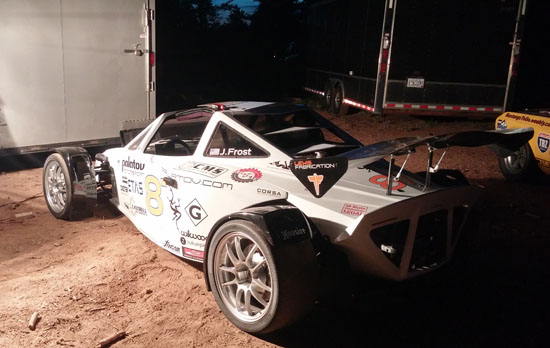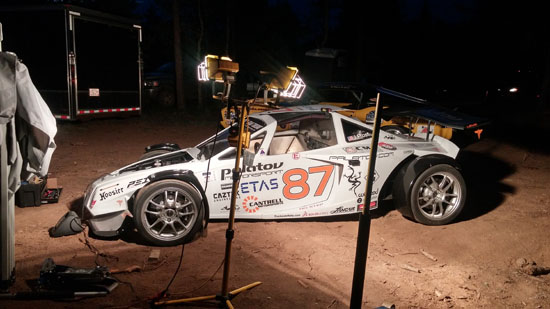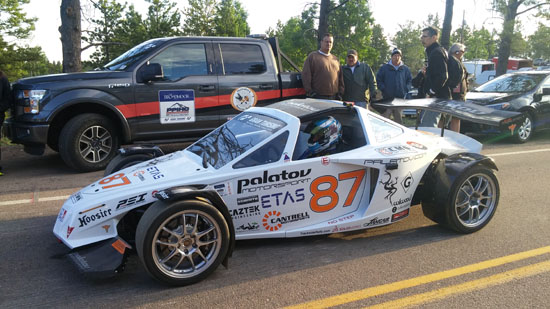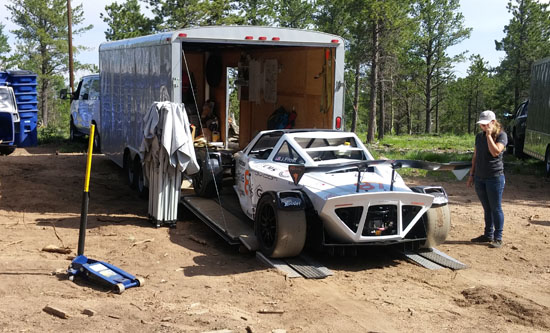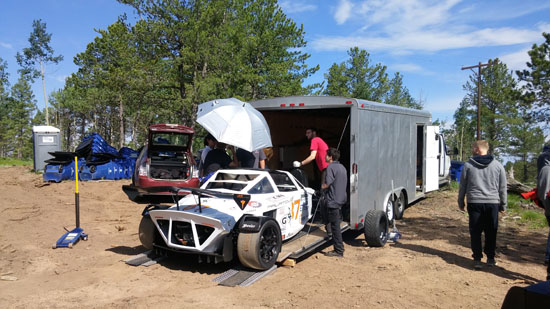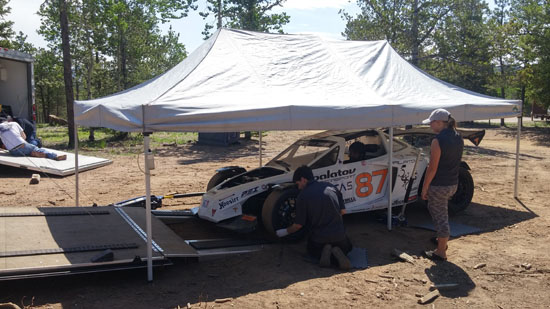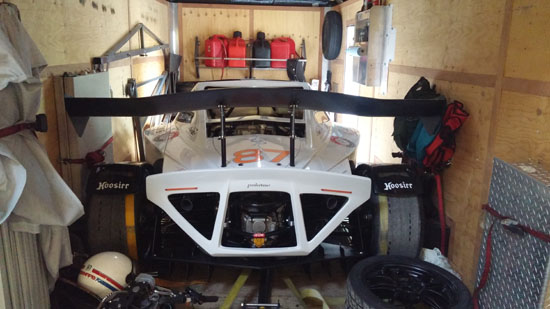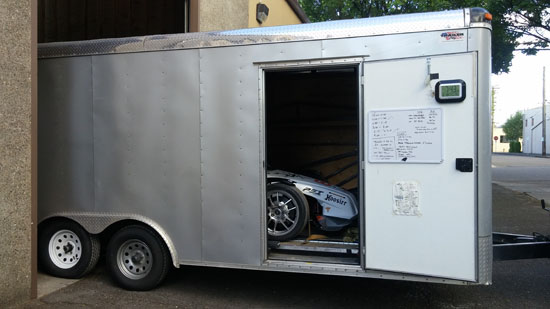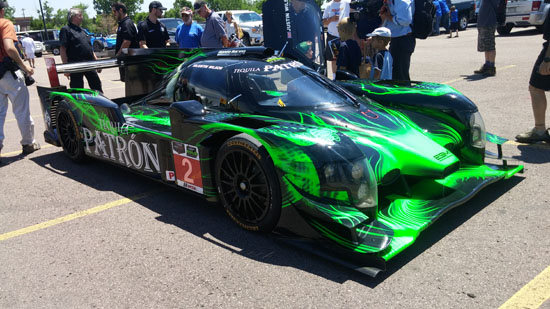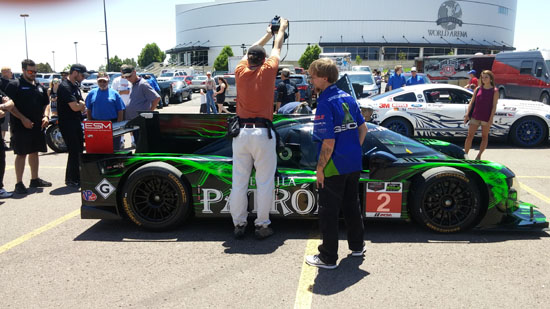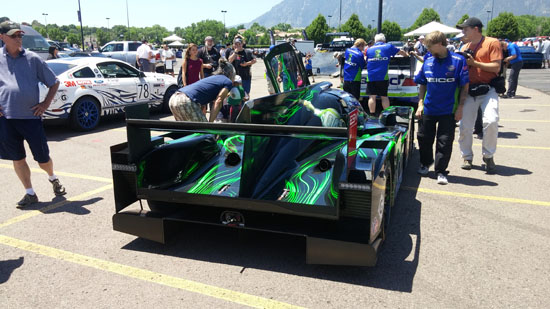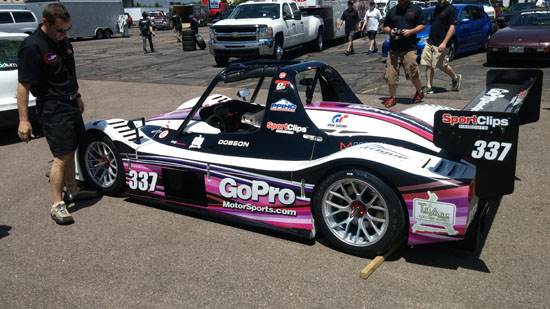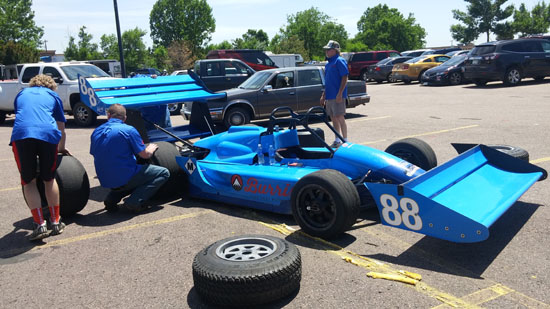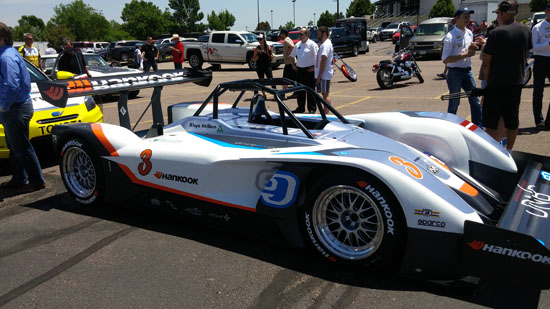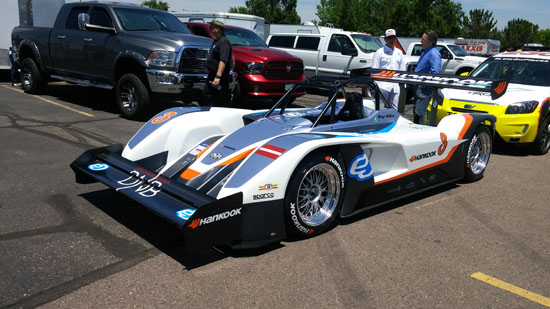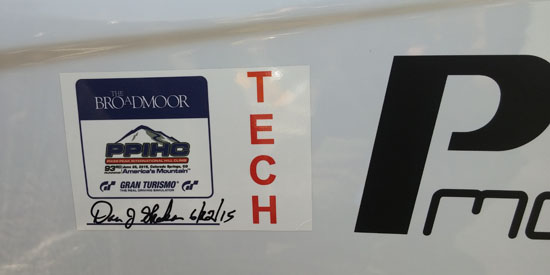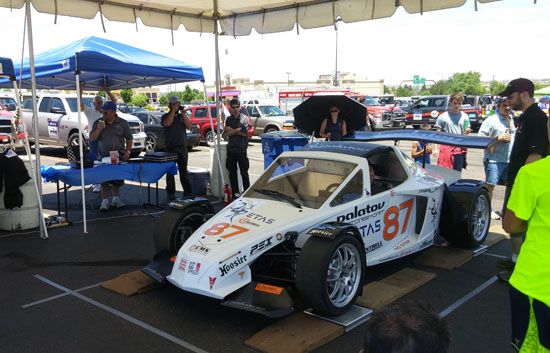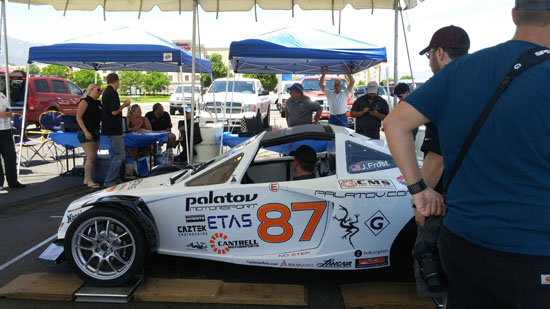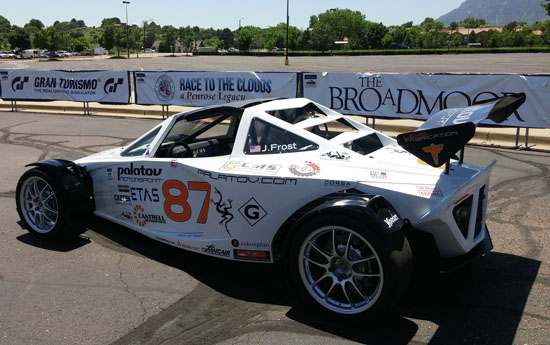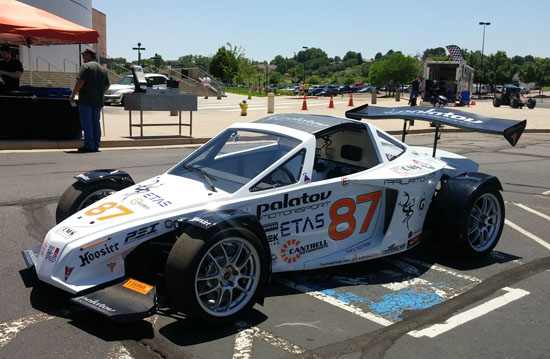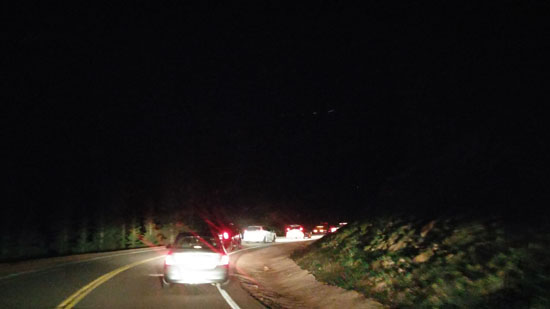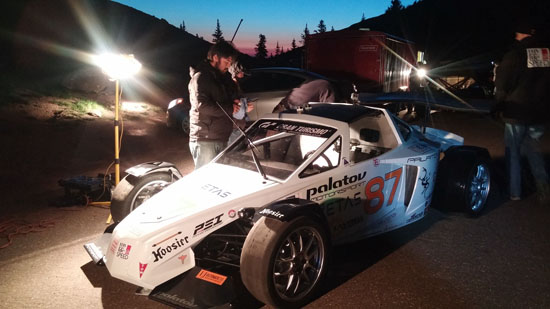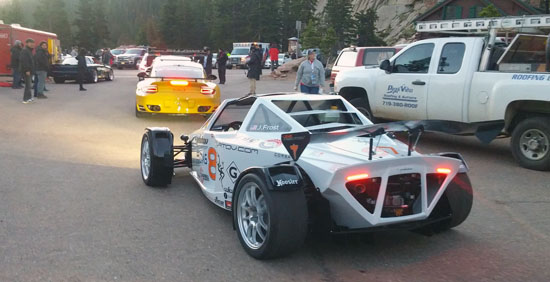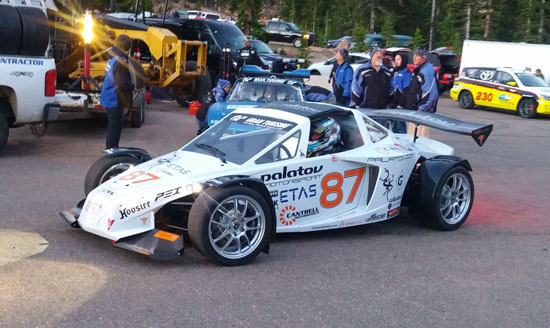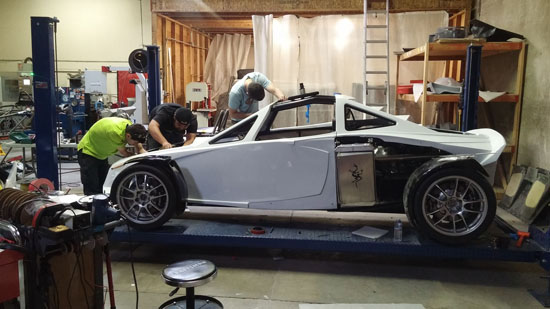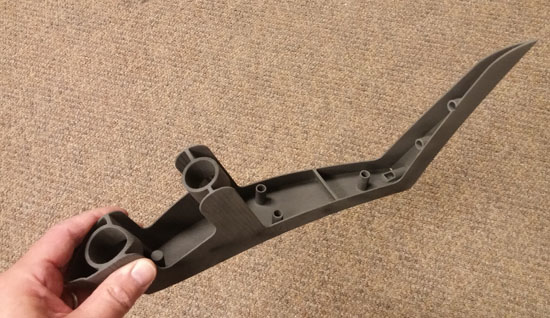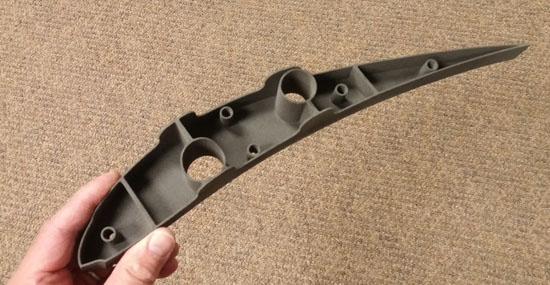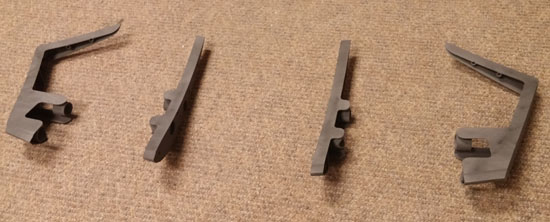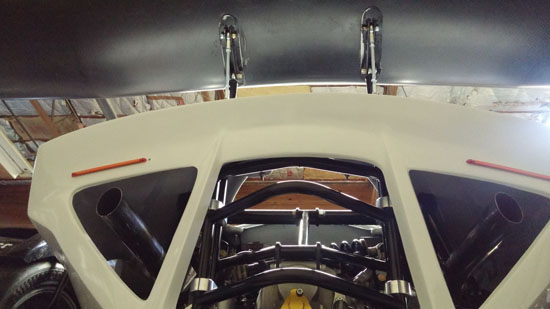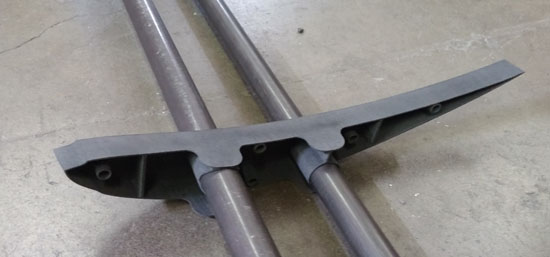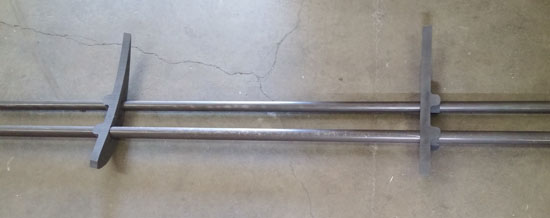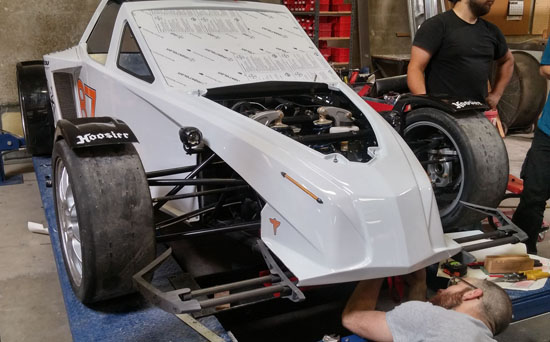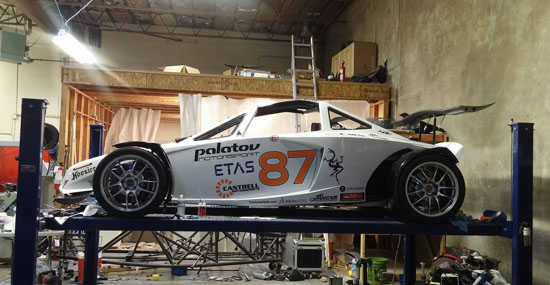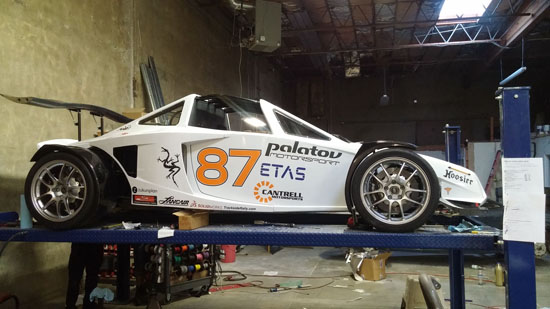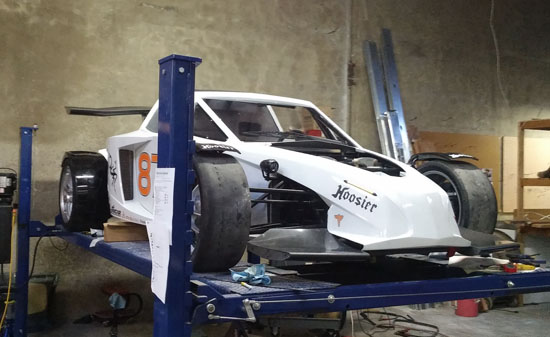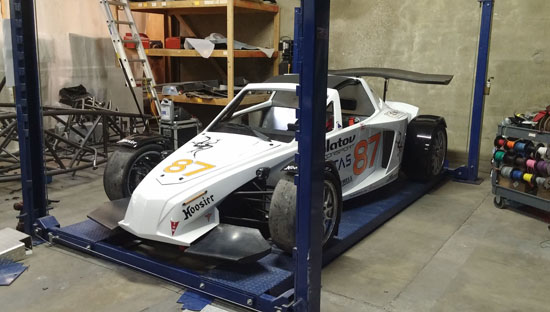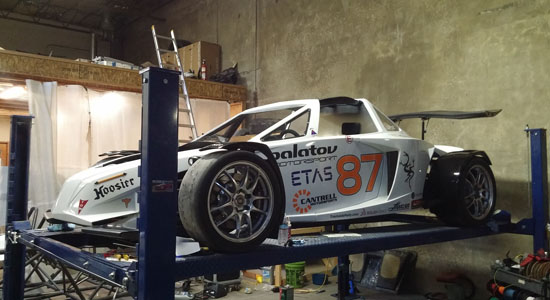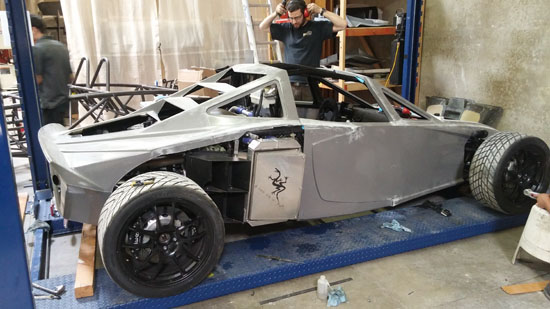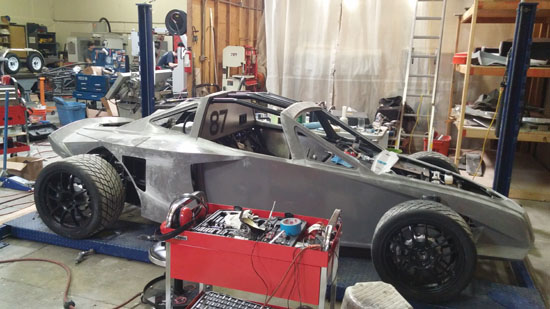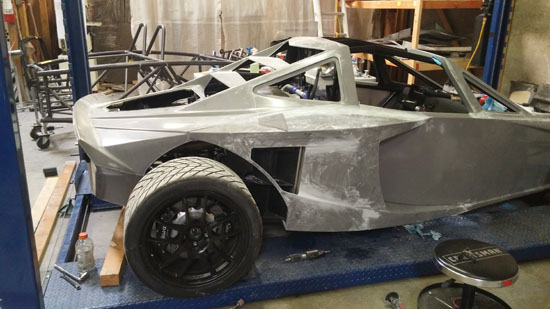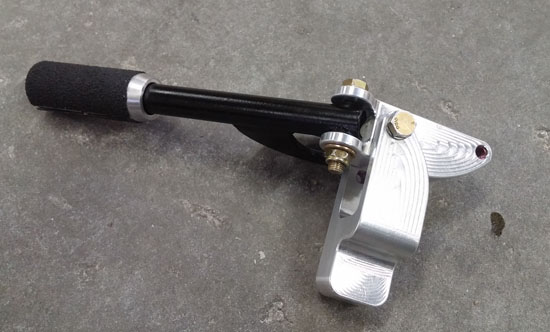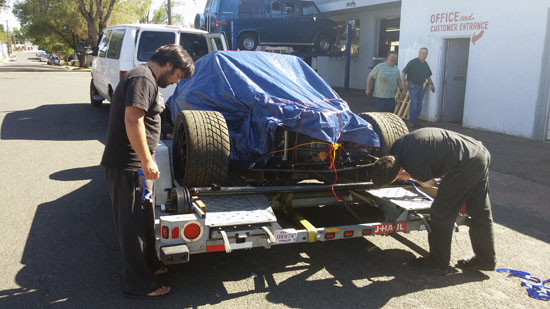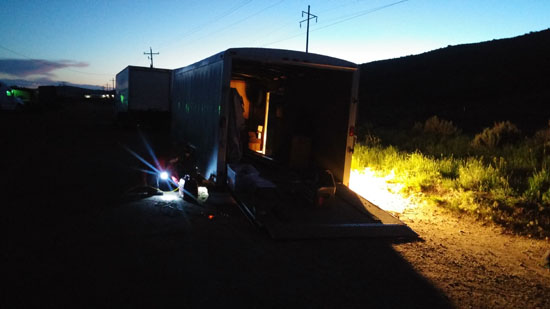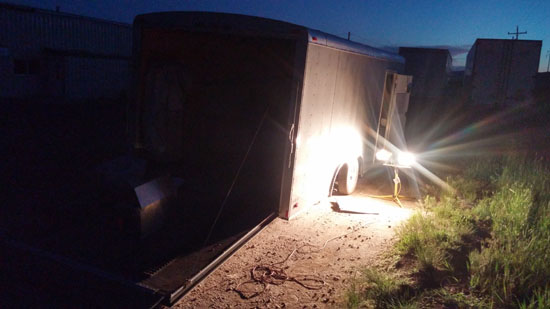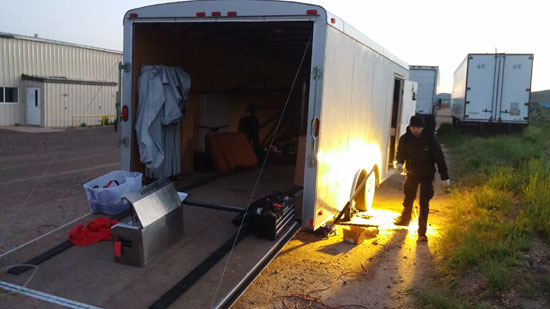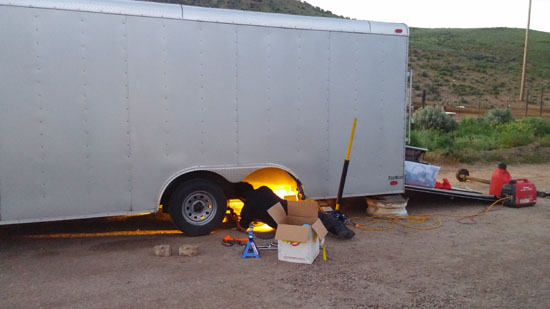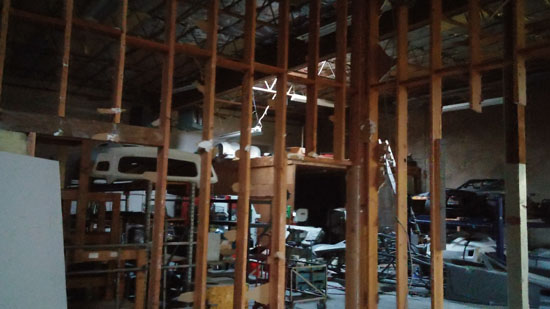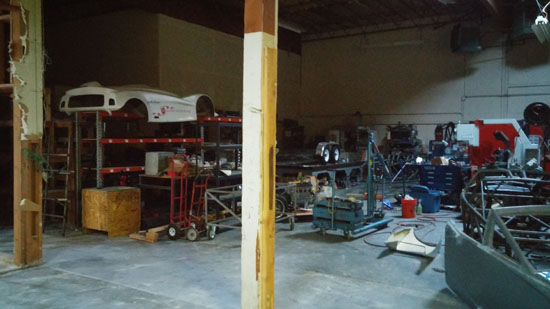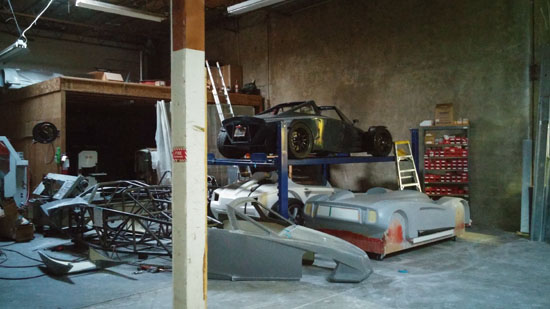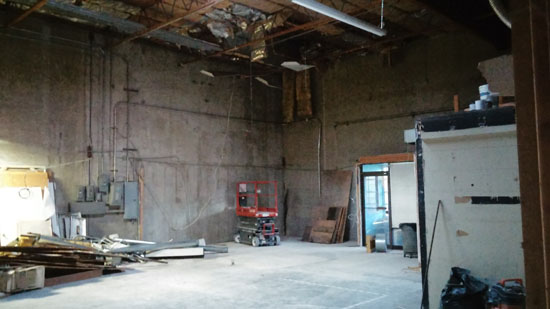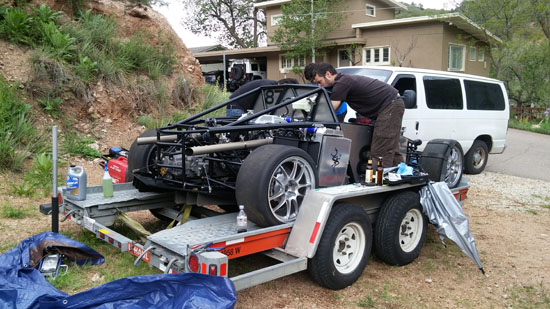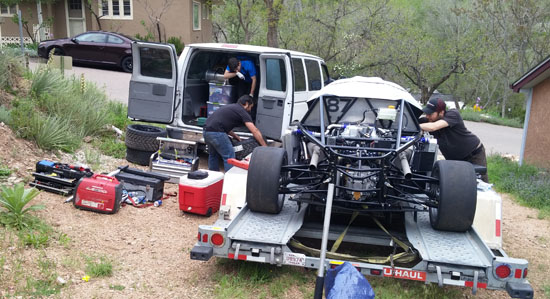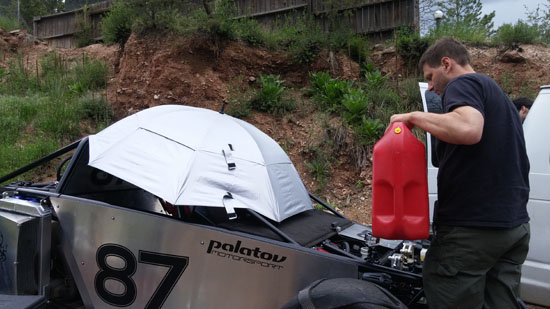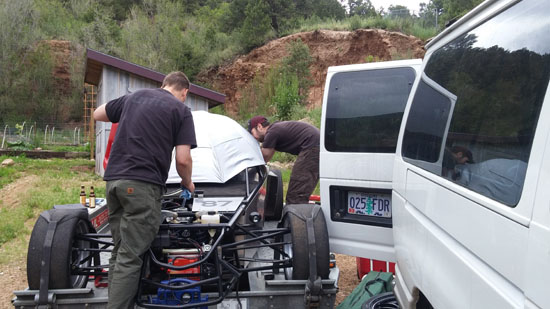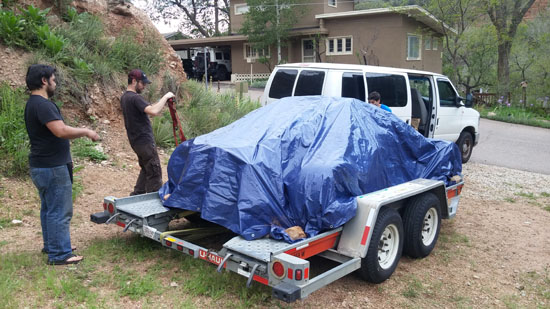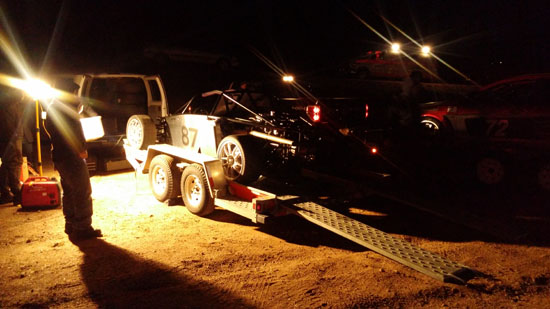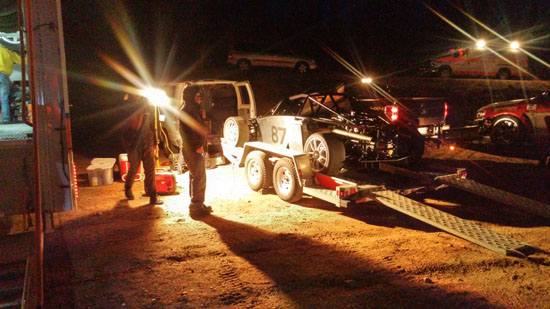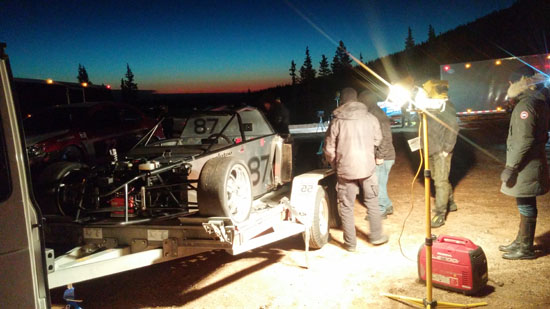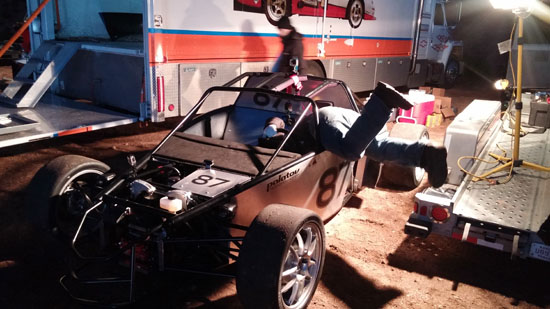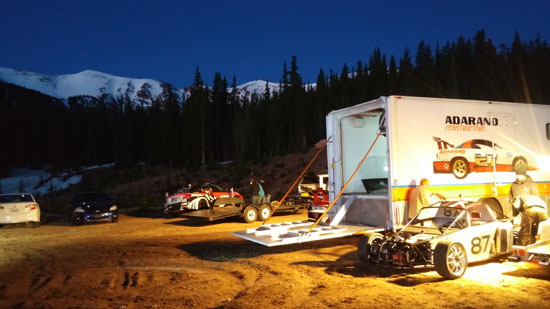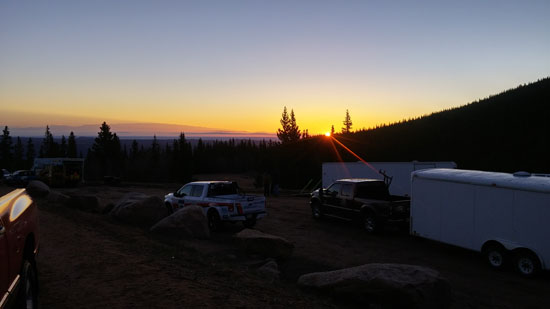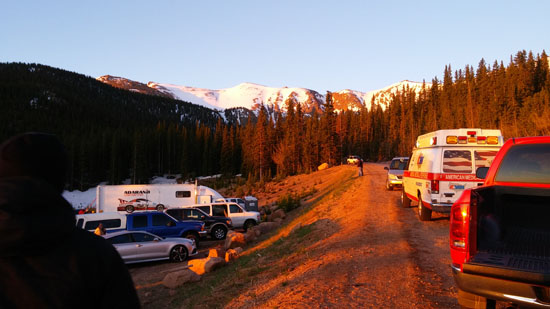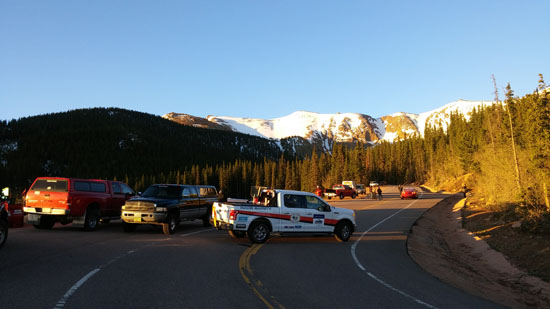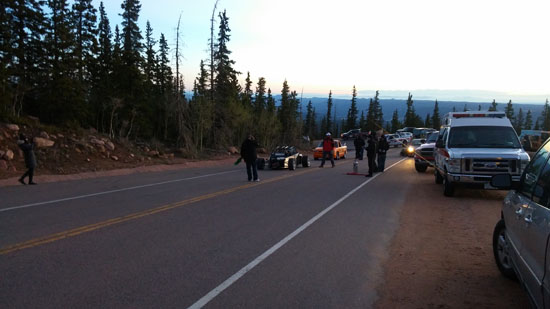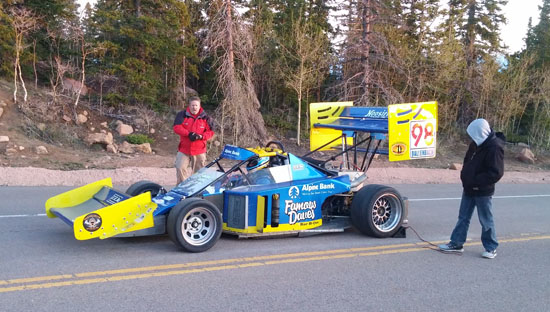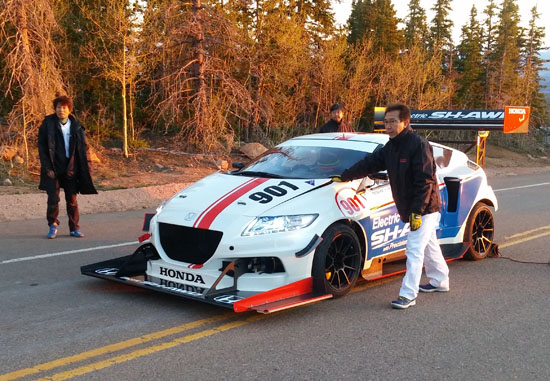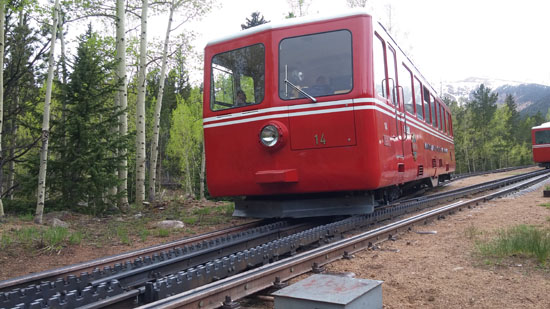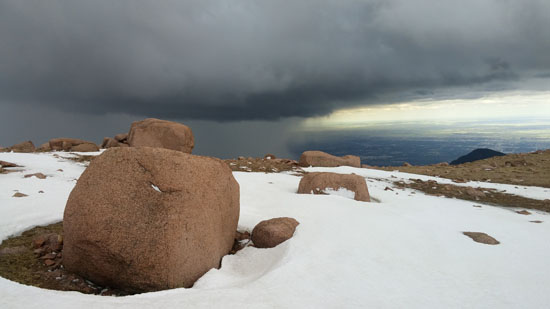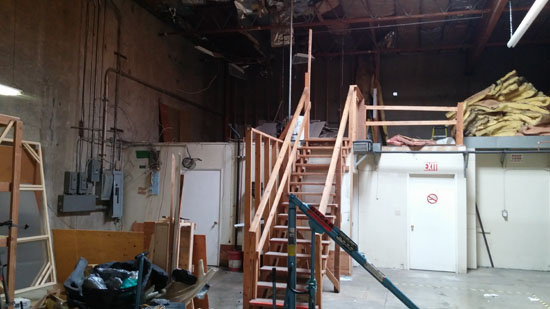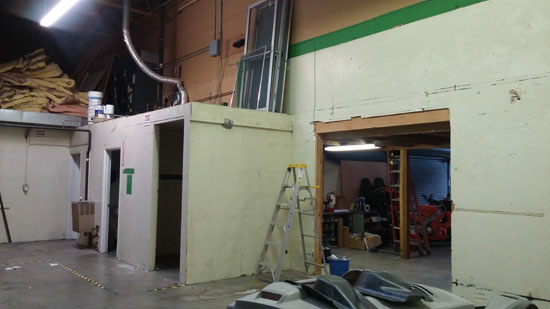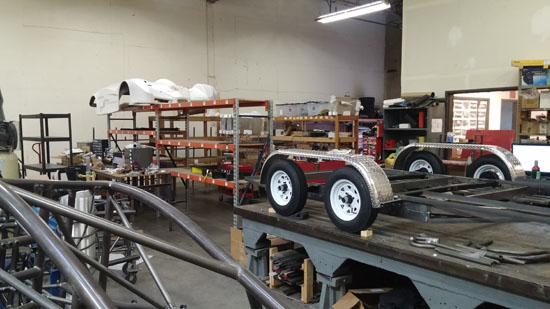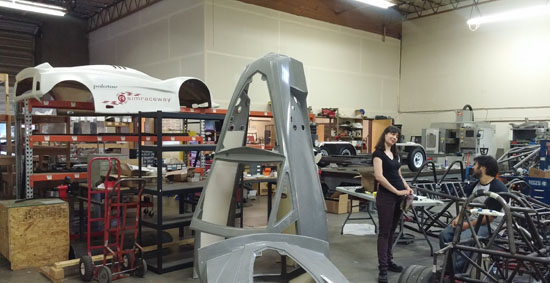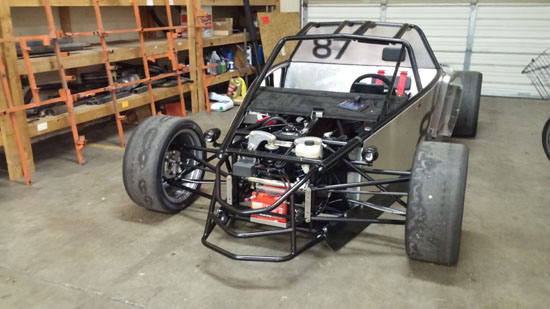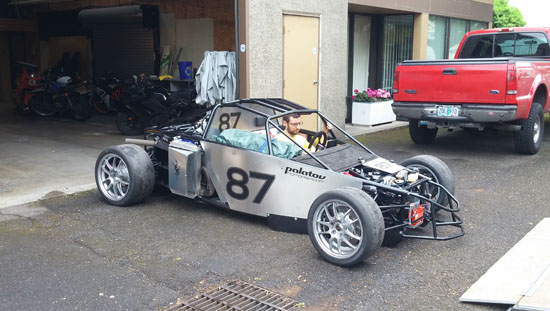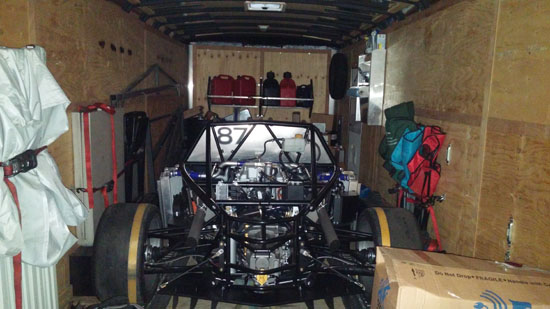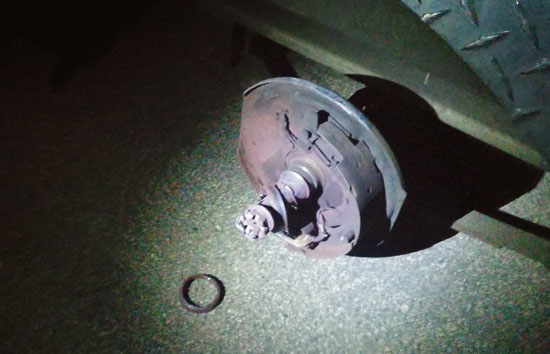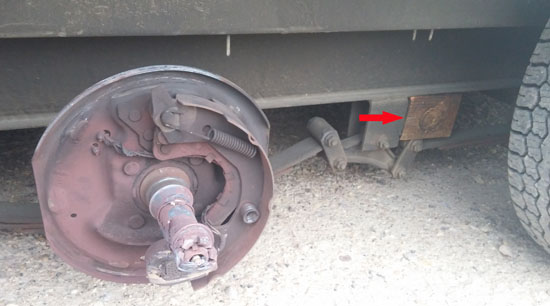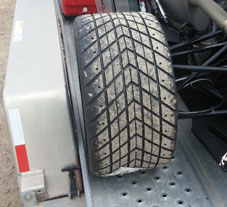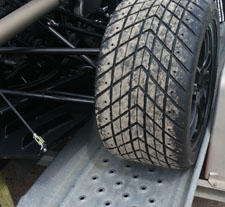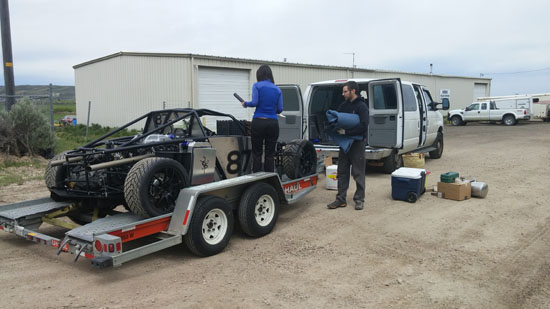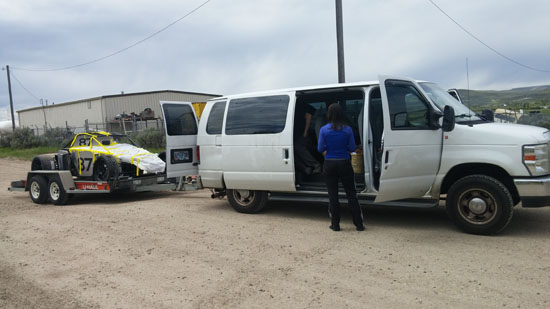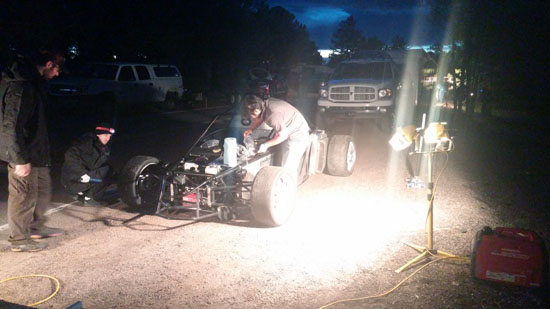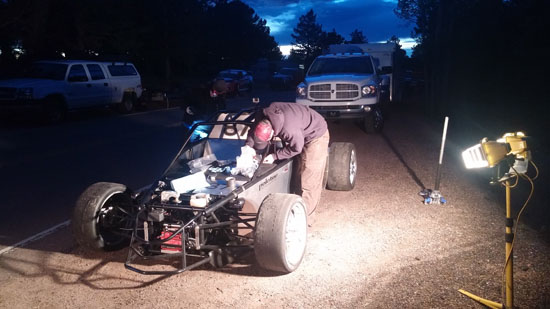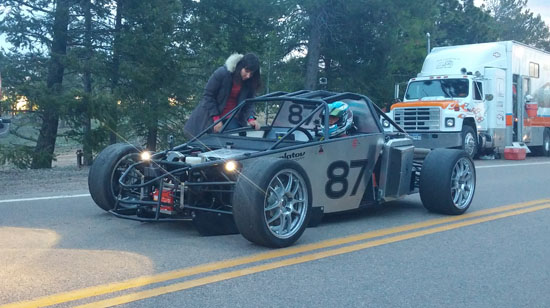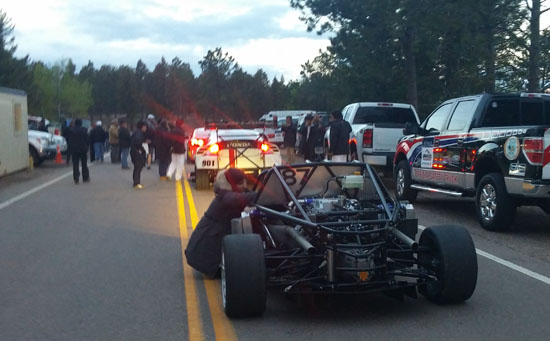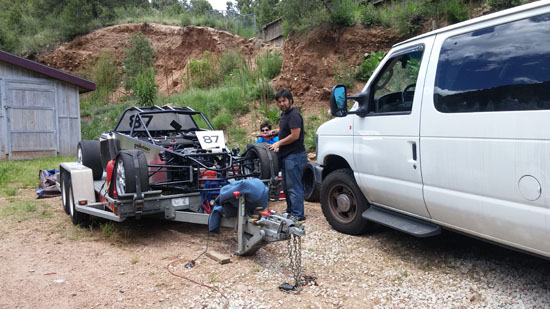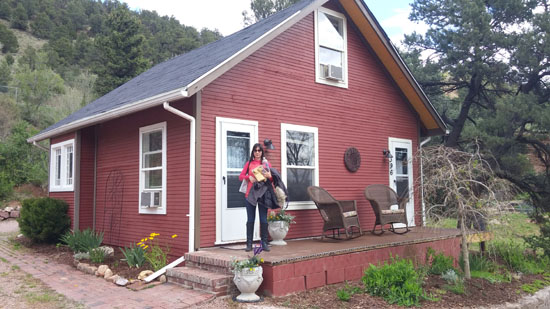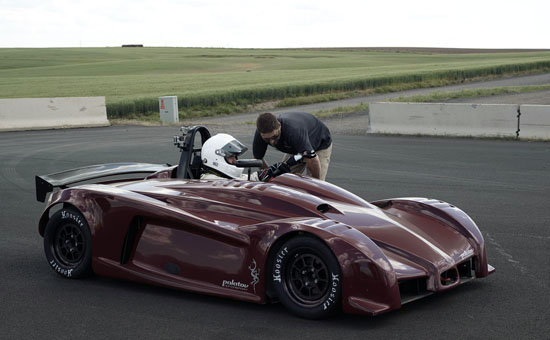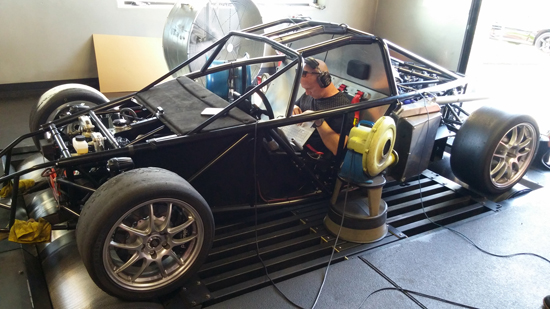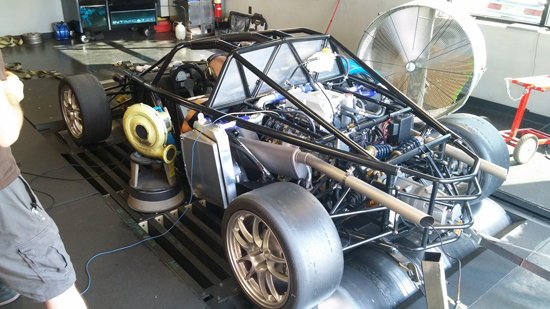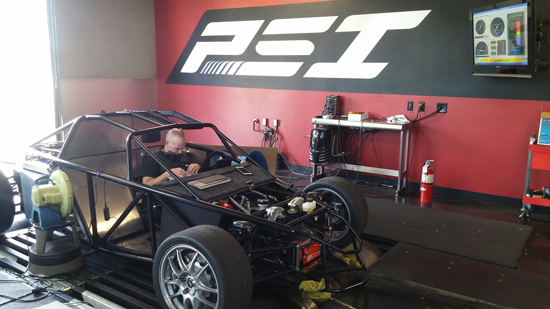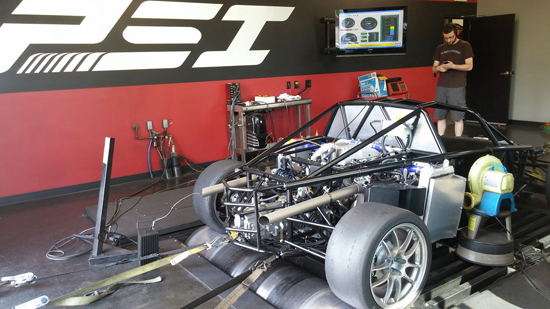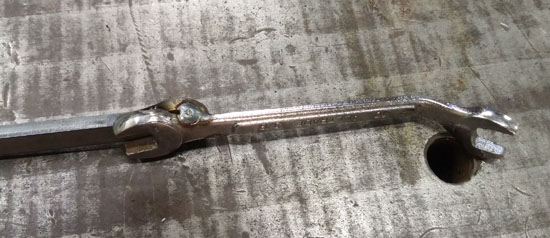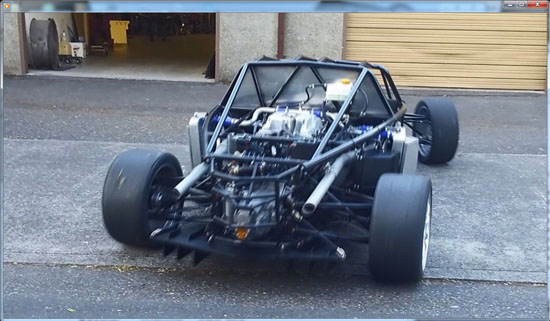No energy to do posts until now (well, even now, seeing how I just drove 28 hours from Colorado Springs to Portland, only 3 of which were sleep in a rest area). But I’m currently waiting to hear the official word on whether our class win will stand. So might as well write the blog in the meantime. Never a dull moment 🙂 Oh, and I got a couple additional pix that Jonathan took up top Wednesday, so here they are, just because I think they’re cool:
So now I’ll start where the last post left off. Friday practice was on the middle section again and was uneventful. We almost didn’t run, thinking that Tuesday’s optional practice on the same section qualified for the rookie requirement of completing a run on each part of the Mountain. It didn’t, so good thing we showed up to this one.
Jonathan used a couple of the runs to break in the new set of Hoosier A7s – they started out very slippery but came in quickly and after the second run he declared them ready. On the subject of Hoosiers, earlier I happened to speak with Mercedes factory driver Uwe Nittel. He said they were hesitant to run an American tire and brought in six sets of different European tires for comparison testing. The Hoosier A7 was by far the clear winner of the comparison and that’s what they ran in the race. Good to know.
Being the top qualifier in our class, our attendance at the Fan Fest Friday afternoon was mandatory. We showed up early and scored a prime spot.

It was a good opportunity to test out our new flags which work great (thanks to MyLife@Speed). Lots of fans, lots of positive attention. Quite a few dpcars blog followers stopped by to say hello. So did Pete, the car’s owner and our primary individual sponsor, who just got into town for the race.
Saturday we took the car up to the pits, unloaded, and went through everything. Tristan redid the belt tensioner adjustment just to be sure. In order to do that, the supercharger boost control valve connector has to be unplugged. Leaving it unconnected is what caused our 150hp power loss earlier, so I make a mental note to check it. After all is reassembled I start the car, blip the throttle and see a puff of black smoke from over-rich mixture. That’s what it used to do when the connector was unplugged so I mention it to Tristan. He says yep, I see it. Should check the connector. We talk to a few people, take some pictures, then load the car in for the night and head down to the barbecue that M has organized at the house.
After getting up at 2 am for a week, Sunday’s 5 am wakeup seems luxurious. We all pile into the van, manage to get around about 500 cars lined up to turn onto the Pikes Peak highway, and start setting up.
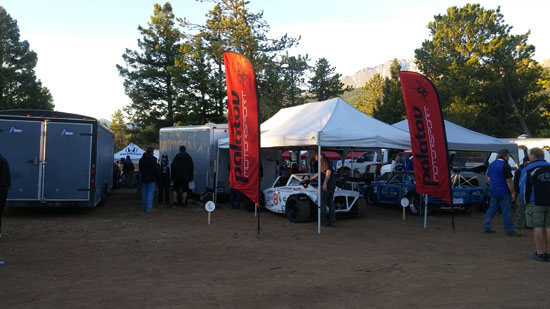
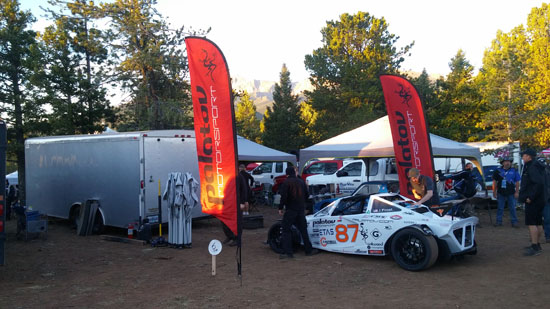
The weather is beautiful. Bikes run first, then they are done around 10:30 am and the cars line up. We are 6th among them. Jonathan straps in, cameras are on, he rolls up to the start and then he’s off. We anxiously crowd around the live timing screen.
Radio announcers mention Jonathan going by the Picnic Grounds speed trap at 106 mph. Wait… we were at 121 in practice, according to GPS data. It’s a sick feeling, like someone physically punched me in the stomach. I watch the screen for first section time and it’s much slower than I expected. I tell Tristan and his face goes pale. WE NEVER CHECKED THE BOOST CONTROL CONNECTOR AND IT’S UNPLUGGED! All the work, all the effort, all the training, all the fine-tuning. And now we’ve sent Jonathan into the fight with one hand tied behind his back.
We can’t roll back time although uselessly I keep wishing we could. In my head I replay all the opportunities we had to get this right. Just a simple click. We nervously watch the section times. They are not exactly real-time, so checking the watch after the expected interval and seeing a blank spot on the screen is excruciating. Then the final time comes up – 10:21. Based on the data we gathered in testing we were hoping for mid-9s. The relief of seeing a finish time and knowing Jonathan is safe and car is OK does not make the sick feeling go away.
DAMN. We’ve overcome so much and now we defeat ourselves, with something we knew about and had every opportunity to fix. But it’s not a total loss. We did finish. Jonathan obviously put in a brilliant drive (I later learn just how hard he had to push once he realized he had no power). Now we have to see if it’s still enough for a win. Layne Schranz, our closest competitor in the class, goes up next. We were consistently faster than him in practice but now his section times are shorter. This is not looking good. The third section time comes up and he is clearly ahead. But then the finish time never does. Layne blew up his motor at Devil’s Playground and is out.
The other car to watch in our class is the factory Honda NSX entry. They complete the run but finish with a slower overall time than ours. Now the weather is starting to turn rapidly. Looking at the summit we can see clouds and lightning. We get word that it is now snowing at the top and the race is temporarily stopped. Because the summit is covered in three inches of snow, the remaining competitors will only run to Glen Cove, approximately halfway up.

Then the day is done. The cars are on their way down. Suddenly we get word that because of the shortened race for some competitors, the results would be based on time to Glen Cove and not the complete runs. We are further told that since Layne was faster to that point he would get the win, even though he did not cross the finish line. Competitors who set records today are told that the record would have an asterisk attached but would be honored. We have some discussions with the officials. They are open to input but have a lot to deal with right now, which I can understand. Putting on the event is a huge undertaking and many decisions have to be made on the fly. In the meantime we can at least take some pictures of the car with the flag that Jonathan brought down from the summit.
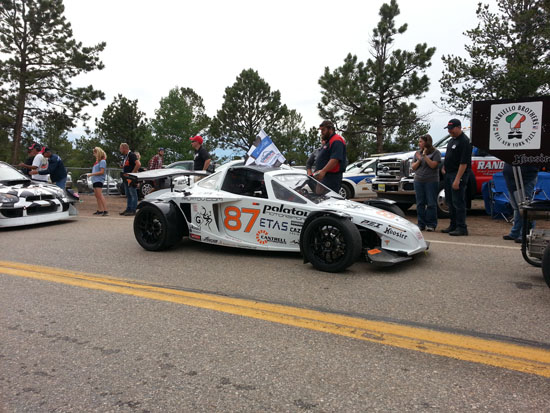
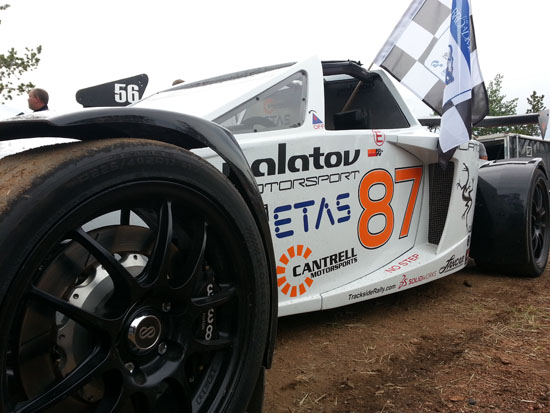
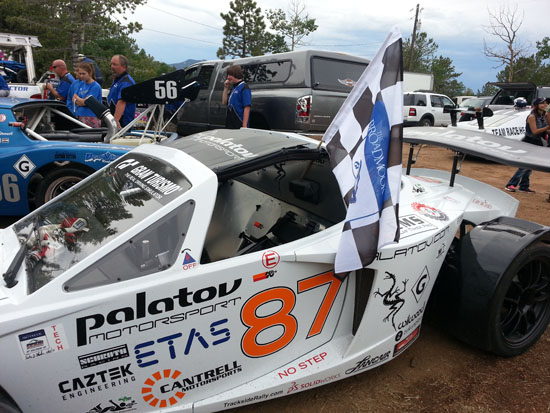
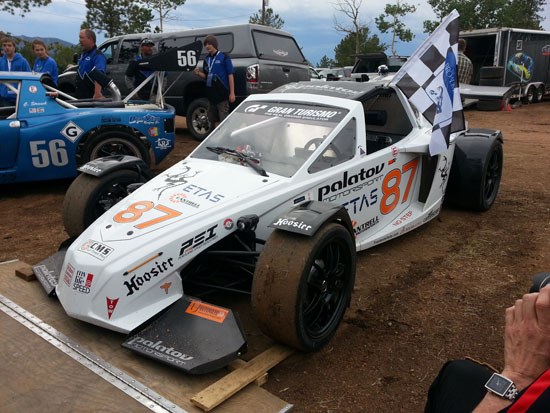
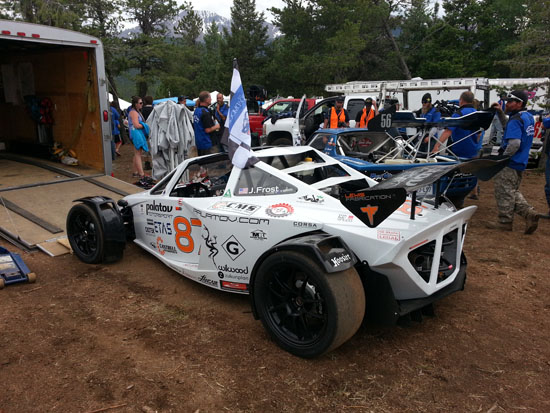
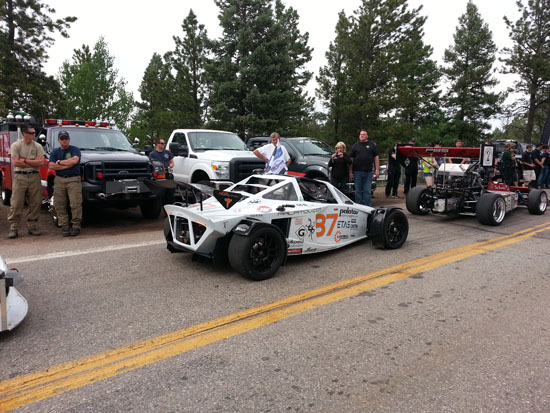
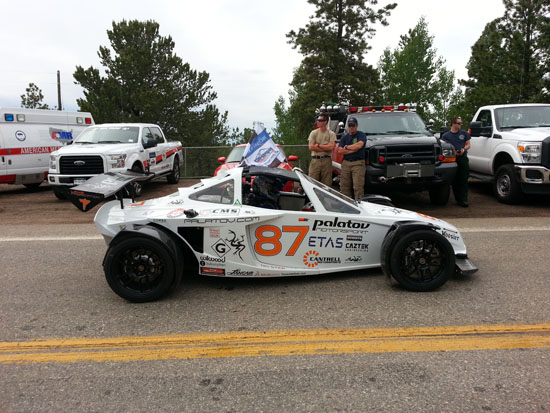
We are eventually told that today the decision stands but we can protest it in writing if we wish and the protest would be reviewed with an open mind. I hurriedly dictate the summary of our position to Peter who scribbles it on the cleanest piece of paper we can find (my own handwriting is terrible, I’ve been typing for the last 30+ years). We submit it with the required fee, then attend the awards ceremony. Afterwards we pack up and head down to the house one last time. We have a long drive ahead and I don’t expect official word until Tuesday. The officials, staff and volunteers have a LOT of work to do cleaning up the Mountain and wrapping up hundreds of tasks.
Emotions are mixed. On the one hand, we have lots to be thankful for. We finished safely, with a fastest complete run in class. The 13th overall position puts us in top 10% among 133 competitors (barely, but still). Jonathan put in a drive of his life and there will be some good video once we are done editing it.
The protest could go either way and we’ve done what we can there. We feel our position is sound and fair – each competitor faces the Mountain and its challenges. Some get to the top, some don’t. We run in order of qualifying and the faster qualifiers have better chance with the weather. They earn this chance with the qualifying run. Those who make it all the way and cross the finish line to take the checkered flag, post a time. That time is theirs and should not be subject to modification after the fact because someone else didn’t make it to the summit. Now all we can do is hope that after considering all viewpoints, the officials will agree.
But then there’s still the sick feeling in the stomach that won’t go away. Unplugged connector – such a simple thing. We’ve shot ourselves in the foot. We’ve let our driver down. None of the controversy would be necessary if we had enabled him to keep his practice pace and put in a sub-10 run, which we know both he and the car are capable of. It wasn’t something we didn’t know about. We’ve looked the problem in the eye and somehow let it get the better of us. There are many lessons in this. We better learn from them as a team.
The liquor stores are closed when we get off the Mountain but our host Robyn ‘loans’ us two bottles of vodka (we buy her new ones in the morning). The booze hits the spot and takes the edge off for the evening, but of course everything is still there the next day.
So that’s how I set out on the 25+ hour drive home. It’s uneventful and I stay fully awake churning all the could-have-dones in my head. The officials call twice to let us know the time they’re going to meet and make a decision. I appreciate the calls, it makes the wait a lot easier.
We get to the shop, unload and wait. Then it’s official – the protest is upheld and we are the winners of Open class in the 2015 PPIHC. The time we earned is ours. Importantly, this decision also clarifies the rules going forward.
Now it’s time to look at everything and make plans for next year. We’ve run twice, both times with a class win achieved despite having preventable engine issues that resulted in half power. We’ve gotten into low tens but have not broken the 10 minute mark. It shows potential and promise, on which we need to deliver. I have some ideas 🙂
In the meantime many thanks are due. First, I want to express my gratitude to the organizers, officials and volunteers who make the Pikes Peak International Hillclimb happen. It is their efforts that make our part possible. I was impressed in 2012 and I have seen many improvements this year. The 100th anniversary will be even better.
Next, I want to thank our sponsors. Our primary individual sponsor, Pete Stoppani, deserves the most credit because quite simply, without him the car would not exist. Every individual contribution to our effort is deeply appreciated. Those of you who have supported us with $50 or more, now is the time to mail us your shirt and/or jacket sizes (need not be same) so we can get them made. Email details to PikesPeak@palatov.com
Our commercial sponsors have been essential to the effort, providing both financial and material support: ETAS, Hoosier, SolidWorks, Cantrell Motorsports, CMS Laptimer, Lancair Composites, Zukun Plan, Arcflash, Driveshaft Shop, Oregon Raceway Park, Wilwood, Ultimate3D, Portland Speed Industries, Lewis Fabrication.
And finally, I want to thank our customers who have been an integral part of the development process.
Next year will be even more interesting!


